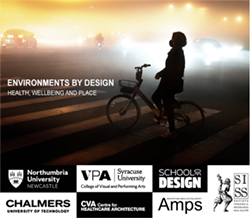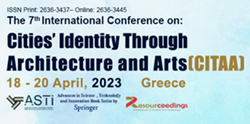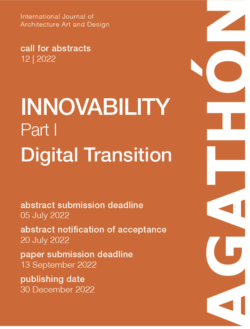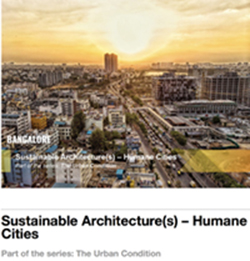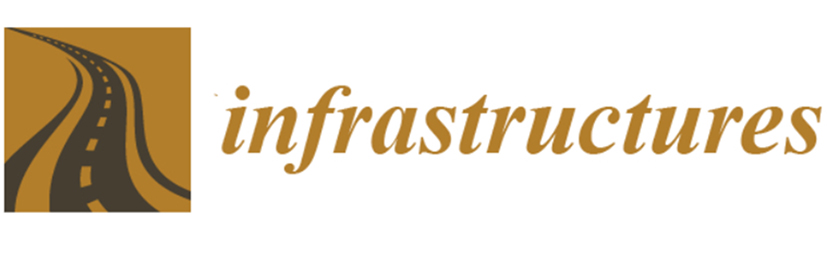ISSN (online): 2412-3811
Call of the Journal:
- Advances in the Management and Application of Construction and Demolition Waste
- Agricultural Infrastructure
- Application of Artificial Intelligence to Model the Behavior of Infrastructure
- Application of Machine Learning and Artificial Intelligence in NDE and Structural Health Monitoring of Civil Infrastructures
- Big Data Analysis and Visualization in Transport Infrastructure | Challenges for Operations, Control, and Planning
- Critical Infrastructure Resilience Facing Extreme Weather Events
- Designing and Managing the Next Generation of Transportation Infrastructure
- Durability of Concrete Infrastructure
- Innovative Practices into Road Pavement Maintenance Management
- Inspection, Assessment and Retrofit of Transport Infrastructure
- Neural Networks in Land Transport, Vehicle and Railway Engineering
- Non-destructive Testing and Evaluation for Civil Infrastructures
- Pavement Management | Inspection and Life-Cycle Assessment
- Pedestrian and Bicycle Mobility in the Future Cities of the World | Between Adapting Infrastructure and Changing Behavior
- Rail Infrastructures
- Reliability and Durability of Pipelines
- Remote Sensing and Infrastructure Information Models | Methods, Applications and Smart Management of Infrastructure Data
- Research and Developments in Pavements
- Resilient and Smart Transport Infrastructure for Connected and Autonomous Vehicles
- Reusing, Recycling and Repurposing Infrastructure | Components and Construction Materials
- Road and Rail Infrastructures
- Seismic Reliability Assessment and Advances in Structural Modelling
- Selected Papers from the 8th Civil Structural Health Monitoring Workshop
- Smart Infrastructures
- Smart Materials for Sustainable Infrastructures
- Smart, Sustainable and Resilient Infrastructures
- Structural Assessment and Health Monitoring of Infrastructures
- Structural Health Monitoring of Civil Infrastructures
- Structural Performances of Bridges
- Sustainability of Building Materials and Structures
- Sustainability of Concrete Infrastructures | New Applications, Monitoring and Retrofitting
- Ultra-High Performance Concrete (UHPC)
- Underground Infrastructure Engineering
Jul
2021
Aug
2021
The resistance of concrete structures against different kinds of environmental and chemical attack is important, as it defines the service life of the structures. Therefore, in the last few decades, there has been a tremendous flow of research literature in the field of concrete durability. Durability properties resisting deterioration processes such as corrosion due to chloride and carbonation attack, different chemical attacks, freezing and thawing, and alkali-silica-reaction in aggregates in concrete are the topics most discussed and studied by researchers. Additionally, the brittle nature of concrete could require additional technical solutions to guarantee the durability of reinforced concrete structures. The formation of large crack widths in conventional reinforced concrete is one of the major problems from a structural durability point of view, as it is well known that large cracks allow the fast penetration of gases and liquids into the concrete. Cracks in concrete structures are unavoidable because of the low tensile strength and the low deformability of conventional concrete. Nevertheless, fine cracks in cementitious composites have been shown to reduce the average ingress rates, which in turn have the potential to extend structural life until corrosion starts and reduces the corrosion rate. In recent years, new types of materials (e.g., high-performance cementitious composites, fiber-reinforced composites, engineering cementitious composites, strain-hardening cement-based composites, and nanoparticles-based composites) with potential applications in the protection of concrete structures have been developed. However, to meet the current strict building code requirements in many countries, these developments offer new outlooks that need to be explored and studied. Therefore, the principal objectives of this Special Issue are: To collect the knowledge on the recent developments in various types of cementitious materials that have superior corrosion resistance to equivalent steel-reinforced mortar and concrete under mechanical and chemical loads; To embrace the different durability measurement techniques such as new testing methods and modelling that have been developed by researchers. This Special Issue aims to collect relevant research papers or reviews reporting significant progress in the assessment and comprehension of concrete corrosion and degradation phenomena, in the presence of constant and variable loads.
Topics of interest are related to the properties and resistance of cementitious composites in aggressive environments, based on: Chloride- and carbonation-induced corrosion of rebars; Corrosion inhibitors; Cracking; Alkali-silica reaction; Freezing and thawing; Chemical attack; Concrete degradation modelling; Corrosion in fiber-reinforced cementitious materials; Nanoparticles-based coating/mortar for corrosion protection.
Durability of Concrete Infrastructure
The resistance of concrete structures against different kinds of environmental and chemical attack is important, as it defines the service life of the structures. Therefore, in the last few decades, there has been a tremendous flow of research literature in the field of concrete durability. Durability properties resisting deterioration processes such as corrosion due to chloride and carbonation attack, different chemical attacks, freezing and thawing, and alkali-silica-reaction in aggregates in concrete are the topics most discussed and studied by researchers. Additionally, the brittle nature of concrete could require additional technical solutions to guarantee the durability of reinforced concrete structures. The formation of large crack widths in conventional reinforced concrete is one of the major problems from a structural durability point of view, as it is well known that large cracks allow the fast penetration of gases and liquids into the concrete. Cracks in concrete structures are unavoidable because of the low tensile strength and the low deformability of conventional concrete. Nevertheless, fine cracks in cementitious composites have been shown to reduce the average ingress rates, which in turn have the potential to extend structural life until corrosion starts and reduces the corrosion rate. In recent years, new types of materials (e.g., high-performance cementitious composites, fiber-reinforced composites, engineering cementitious composites, strain-hardening cement-based composites, and nanoparticles-based composites) with potential applications in the protection of concrete structures have been developed. However, to meet the current strict building code requirements in many countries, these developments offer new outlooks that need to be explored and studied. Therefore, the principal objectives of this Special Issue are: To collect the knowledge on the recent developments in various types of cementitious materials that have superior corrosion resistance to equivalent steel-reinforced mortar and concrete under mechanical and chemical loads; To embrace the different durability measurement techniques such as new testing methods and modelling that have been developed by researchers. This Special Issue aims to collect relevant research papers or reviews reporting significant progress in the assessment and comprehension of concrete corrosion and degradation phenomena, in the presence of constant and variable loads.
Topics of interest are related to the properties and resistance of cementitious composites in aggressive environments, based on: Chloride- and carbonation-induced corrosion of rebars; Corrosion inhibitors; Cracking; Alkali-silica reaction; Freezing and thawing; Chemical attack; Concrete degradation modelling; Corrosion in fiber-reinforced cementitious materials; Nanoparticles-based coating/mortar for corrosion protection.
DOAJ, Inspec (IET), Scopus (Elsevier), CLOCKSS (Digital Archive), e-Helvetica (Swiss National Library Digital Archive), Google Scholar, J-Gate (Informatics India), ProQuest Central (ProQuest), Science In Context (Gale/Cengage Learning).
Info at: www.mdpi.com/journal/infrastructures/apc
Guest Editors
Dr. Suvash Chandra Paul
Prof. Dr. Gideon van Zijl

